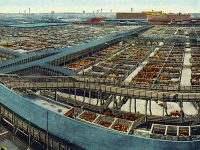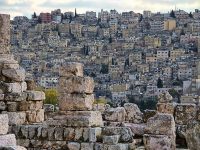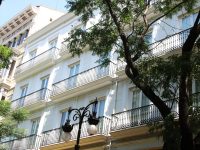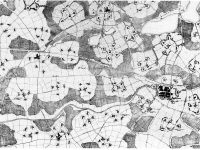Trees in the city
Outstanding challenges to integrate nature in Valencia
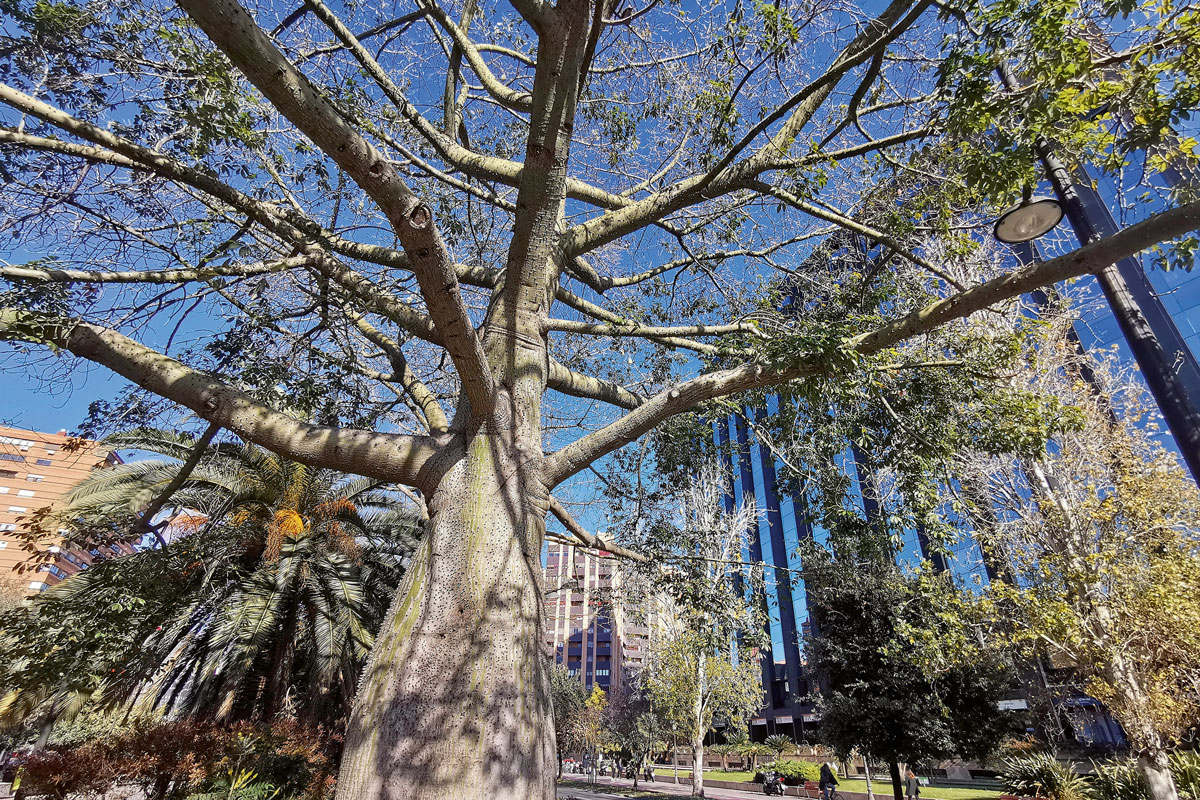
Throughout history, cities have welcomed trees in public and private gardens, as well as in certain promenades or avenues. When they were young, few missed contact with nature: the countryside or forests were within walking distance of the residents. With industrialisation, cities grew, generating crowded urban networks, and while some orderly expansions were planned, most new suburbs were built devoid of green areas. Properly conceived urban sprawls (Cerdà’s in Barcelona, as well as Valencia’s) introduced trees into the streets, while the inside of its blocks, potentially conceived as gardens, was soon occupied with garages, warehouses, and other uses. In addition to hygiene criteria, urban planning ended up introducing the concept of green spaces, while the reality is that at the moment the subject of integrating nature into the city is still pending.
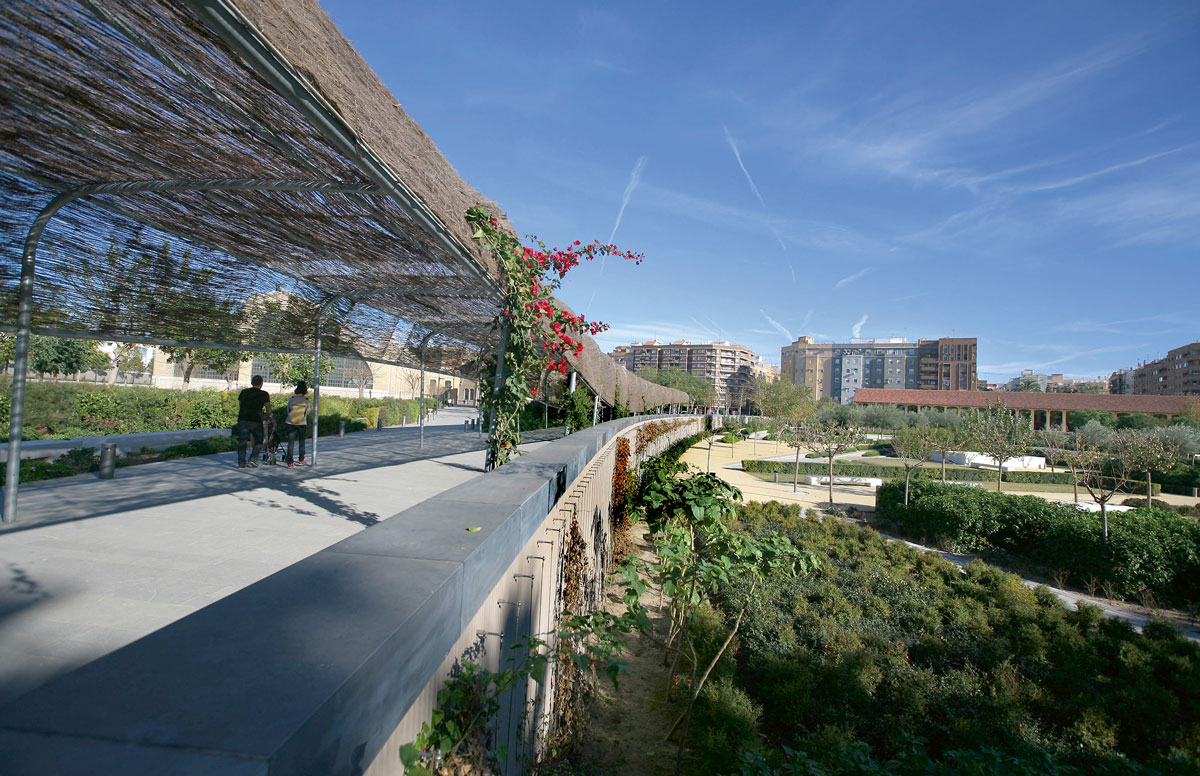
View of Parque Central in Valencia, which opened at the end of 2018 and is located in the southern part of the city. This new urban green-lung occupies over 110,000 m2 in its first phase, and when the project is fully executed, it will cover 230,000 m2. / Photo: Jesús Císcar
Small towns still rarely miss green spaces, while city centres, particularly capitals, have become heat islands where the temperature can sometimes be 8ºC higher than in their surrounding countryside (the city of Valencia is usually about 4–5ºC warmer than its surrounding market garden areas). The cause is the combination of building materials that accumulate heat, the action of polluting sources (motor vehicles, air conditioning units, etc.) and the elimination of permeable soil, among other factors. The well-being of residents requires cities to undertake anti-air pollution policies to transform their urban mobility systems and provide vegetation cover and tree networks to help regulate temperature, and also as a way to mitigate climate change, a global task that requires the commitment of local contributions.
To integrate nature, in recent years it has been necessary to turn to another concept: green infrastructure. From the patches of green (parks, gardens…) in urban plans and in the building pattern, to the need for green to create a connected urban network. From the vegetation that «adorns» and serves as occasional recreation, to a vegetation that protects the city as a whole and becomes a pathway for pedestrians. From green enclosures to a tree-lined network overflowing the urban boundaries. The aim is to improve air quality, to protect human health, and to restore conditions for a good life in general for all living beings.
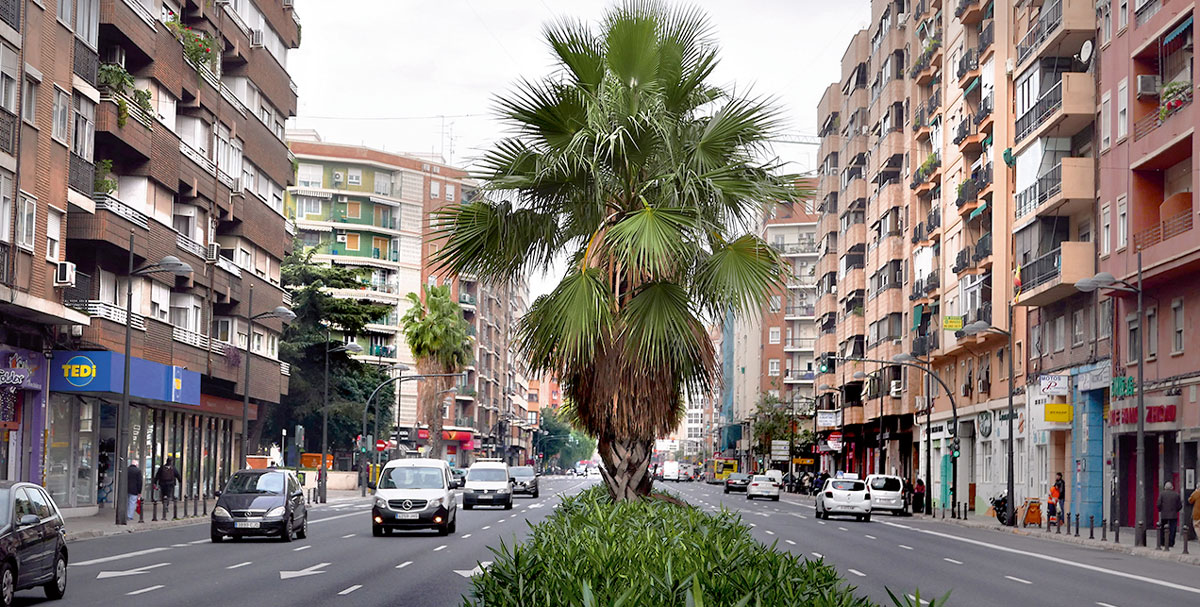
Urban design has often considered trees only as ornaments within cities, and always subject to the presence of cars on the public road. Thus, they have been relegated to road elements such as median strips or small sidewalk trees where only sturdy trees can be planted. In the picture, fan palms on Avenida Pérez Galdós / Photo: Jesús Císcar
The value and functions of trees are known: they are known for their decontaminating capacity as CO2 sinks; from root to crown, they create microclimates and contribute to thermal mitigation; they improve people’s mental health, beautify the urban landscape, moderate environmental acoustics… These are also urban planning functions that are not always properly addressed. Trees are small air-conditioning machines in urban environments, an essential component of most public spaces, generators of well-being for passers-by and observers. This is made possible by their little-recognised value: the adaptability of trees, and of vegetation in general, to different urban realities. Naturally, the species must be rigorously and correctly chosen, and they must be properly planted and maintained. Professionals in botany and gardening know this.
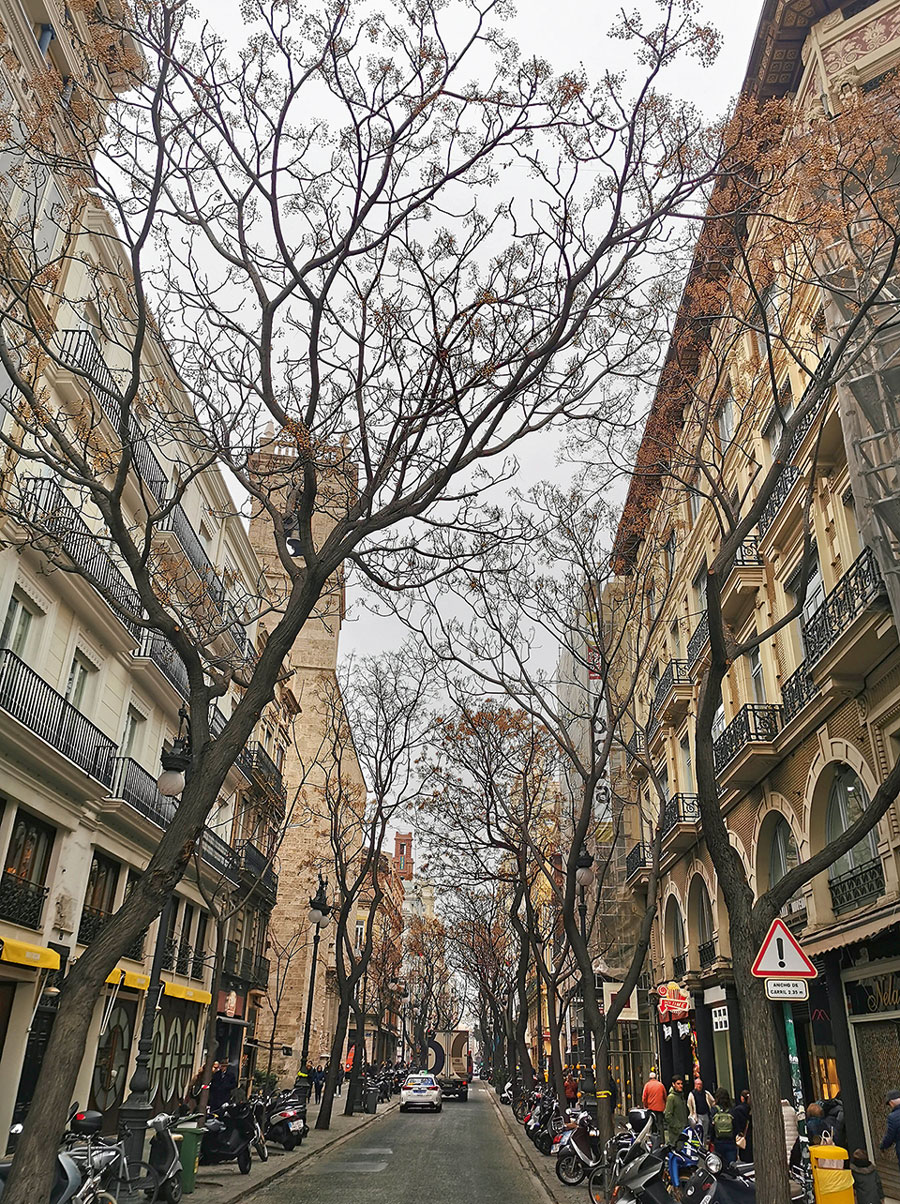
A grove of melia trees provides plant cover for Calle San Vicente in Valencia, one of the city’s most popular tourist spots / Photo: Jesús Císcar
Integrating nature
Even so, urban design has often underestimated these conditions. In a city like Valencia, trees were planted on many roads mainly as ornaments, without taking into account other functions they should perform in the urban environment (and, sometimes, according to the personal taste of political leaders). For example, the planting of Washingtonias, which are easy to maintain and at the same time have little versatility and provide practically no shade, has been abused; or, in some periods, street orange trees, which are debatable as an ornamental species and in any case have no air-conditioning function. The choice of species has to consider multiple criteria: robustness, maintenance economy, seasonal adaptation, integration into the public space, shape, and aesthetics. Now, in times of climate change, their decontaminating capacity (i.e., their CO2 storage capacity) must also be taken into account.
Scarce-surfaced tree holes were common on many sidewalks, sometimes because they were not wide enough to accommodate trees after even the pedestrian space had been cut back, as public roads were designed to accommodate as many motor vehicles as possible while driving and parking. The design criteria were repeatedly one-sided. These errors have been corrected in some downtown streets (San Vicente, for example) but still remain in large sectors of the peripheral neighborhoods.
The city of Valencia has some extremely valuable parks (the Turia Gardens, Viveros, or Parque Central, as well as the nearby Albufera Natural Park and the cultivated market garden area) but a network of green connections has yet to be established. Yes, there are trees in many streets, but without continuity and often distributed in an incoherent way, in many cases not large enough to protect pedestrians and help with air conditioning: the repeated mistake of considering them only as an adornment. There are also insufficient sidewalks that do not allow for wide trees or, in the worst cases, for any tree at all. Think of the avenues that now occupy the old Tránsitos road, the non-existent tree-lined connection between Malvarrosa and Pinedo, of Avenida del Puerto or the pedestrian traffic on a main street such as Xàtiva (where thousands of people arrive every day at the North station). Or in how many streets lack trees or do not have the right ones planted, or in corners that have enough space to plant a large tree. Or in the undefined access of pedestrians to the market gardens…
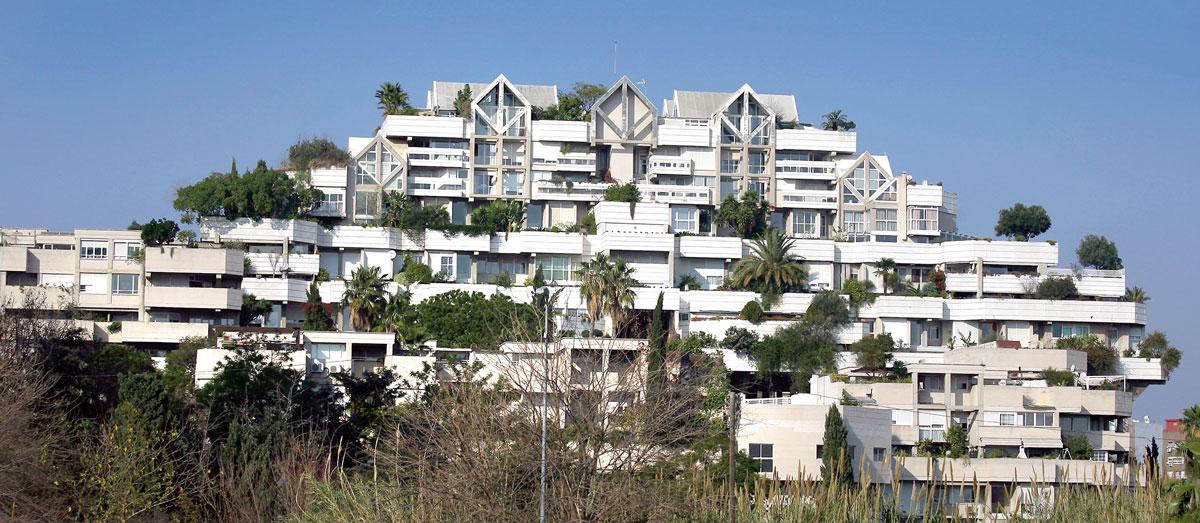
Espai Verd is an exemplary case of the integration of nature in architecture, designed by the architect Antonio Cortés. Its terraces contain vegetation at different heights / Photo: Jesús Císcar
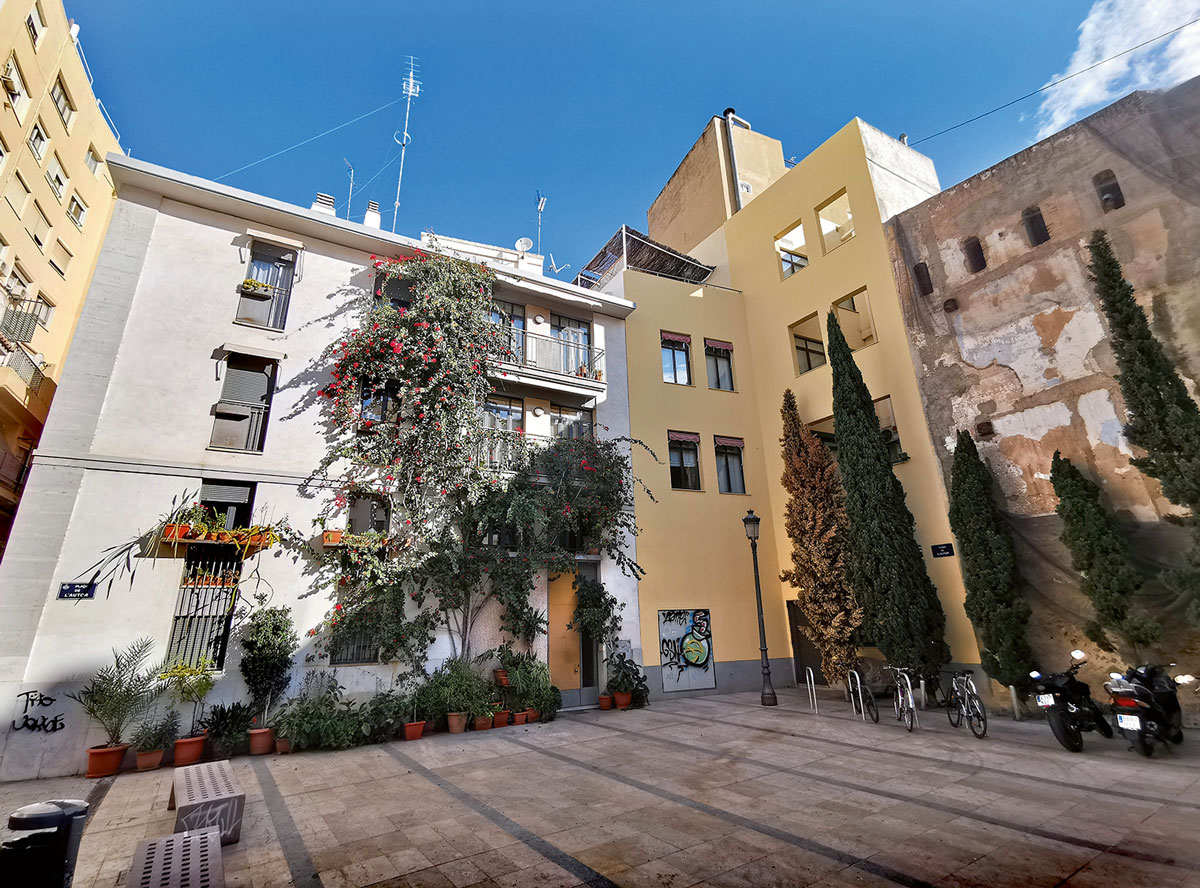
The integration of nature in architecture – beyond the typical pots on balconies – is another one of the pending challenges of urban planning / Photo: Jesús Císcar
Having a vegetation cover for the city would also involve implementing criteria for the integration of green spaces in architecture, in buildings. There is an admirable neighbourhood tradition of populating balconies with plant pots, but there are many more possibilities. The rooftops can house flowers and small productive gardens; the median strips and some facades could be covered with vertical gardens; the inside of the buildings can house trees and plants, as is actually the case in some instances. Here, too, the possibilities are far from exhausted. Considering the ideal scenario in which all city residents can enjoy a garden less than two hundred metres from their house, we can see how much work there is to be done.
Valencia, and most of the towns in the region, need a intervention plan to integrate nature into the city, to create a network of green areas. The plan must be drawn up with active citizen participation and renovated, multidisciplinary criteria. And with a clear political will to apply them (the Valencia Green Plan of 1997 ended recently and was put into a drawer never to be looked at anymore). These provide the future perspective needed to resolve the city’s nature deficits.

